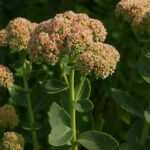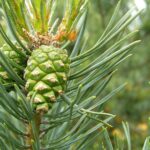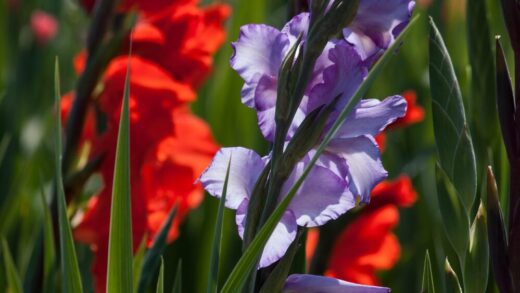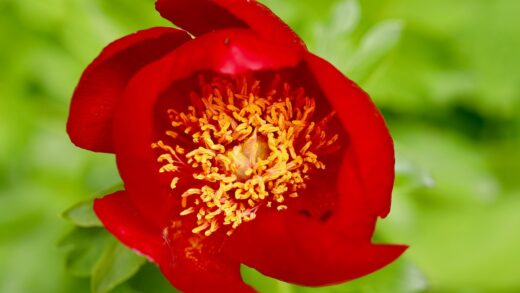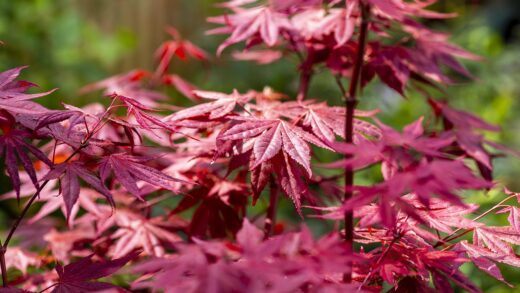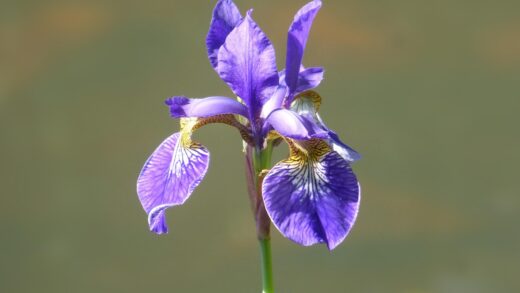To achieve its full potential for growth, longevity, and bountiful nut production, a sweet chestnut tree requires a balanced supply of essential nutrients from the soil. While these trees are not considered exceptionally heavy feeders, a thoughtful and well-timed fertilization program can make a significant difference in their overall health and productivity. Understanding the specific roles of key nutrients, recognizing the signs of deficiency, and applying fertilizers correctly are all crucial components of a successful cultivation strategy. The goal is not simply to feed the tree, but to enrich the soil ecosystem that sustains it, ensuring a legacy of health for years to come.
Key nutrients for sweet chestnut health
Like all plants, sweet chestnuts rely on a range of macronutrients and micronutrients for their basic metabolic functions. The three primary macronutrients, required in the largest quantities, are nitrogen (N), phosphorus (P), and potassium (K). Nitrogen is a vital component of chlorophyll and proteins, and it is essential for vigorous leaf and stem growth. Phosphorus plays a crucial role in energy transfer, root development, and the formation of flowers and nuts. Potassium is important for overall plant health, regulating water movement, activating enzymes, and enhancing disease resistance and cold hardiness.
A deficiency in any of these primary nutrients can manifest in visible symptoms. A lack of nitrogen typically results in pale green or yellowing leaves (chlorosis), particularly on older foliage, and stunted overall growth. Phosphorus deficiency can be harder to diagnose but may cause a purplish discoloration of leaves and poor nut development. Potassium deficiency often appears as a yellowing or browning along the margins of the leaves, starting with the older, lower ones, and can lead to weak branches and a reduced harvest.
Beyond the “big three,” secondary macronutrients like calcium (Ca), magnesium (Mg), and sulfur (S) are also required in significant amounts. Calcium is essential for cell wall structure and root growth. Magnesium is a central component of the chlorophyll molecule, making it critical for photosynthesis. Sulfur is a component of some amino acids and proteins. While deficiencies in these nutrients are less common, they can occur, particularly in very sandy or highly acidic soils.
Micronutrients, though needed in much smaller quantities, are just as essential for the tree’s health. These include iron (Fe), manganese (Mn), zinc (Zn), copper (Cu), and boron (B). They often act as catalysts for enzymatic reactions within the plant. A common issue for sweet chestnuts is iron or manganese deficiency, which is often induced by a high soil pH (alkaline conditions) that makes these nutrients unavailable for uptake by the roots. This results in interveinal chlorosis, where the leaves turn yellow, but the veins remain green, typically affecting the newest growth first.
Assessing nutrient needs through soil and leaf analysis
The most accurate way to determine the nutrient status of the soil and the tree is through scientific analysis. Relying on visual symptoms alone can be misleading, as different deficiencies can sometimes look similar, or a tree may have a hidden “hunger” that is limiting its potential without showing obvious signs of distress. A professional soil test is the first step and provides a baseline understanding of the soil’s pH and the levels of available nutrients. This should be done before planting and then every three to five years to monitor changes over time.
A soil test will provide recommendations for adjusting the pH, if necessary, and for applying specific nutrients that are lacking. For sweet chestnuts, it is particularly important to check the pH, as a level above 7.0 can severely limit the availability of iron and manganese. The test results will guide the application of amendments like sulfur to lower the pH or lime to raise it, although the latter is rarely needed for chestnuts. It also prevents the unnecessary application of fertilizers, which can save money and protect the environment from nutrient runoff.
For established, nut-producing trees, a foliar or leaf analysis can provide an even more precise picture of the tree’s nutritional health. This test measures the actual concentration of nutrients within the leaves, showing what the tree has successfully absorbed from the soil. This can reveal deficiencies or excesses that a soil test might not, as it reflects the tree’s ability to take up nutrients, which can be affected by factors like soil compaction, moisture levels, or root health. Leaf analysis is typically done in mid-summer, using specific leaves as samples.
By combining the information from both soil and leaf analyses, a grower can develop a highly targeted and efficient fertilization program. For example, if the soil test shows adequate iron levels, but the leaf analysis reveals an iron deficiency, it points to an uptake problem, likely related to high soil pH. The solution would then be to lower the soil pH rather than simply adding more iron to the soil. This data-driven approach is far more effective than guesswork and is the standard practice in commercial chestnut production.
Organic vs. synthetic fertilizers
When it comes to fertilizing sweet chestnut trees, growers have the choice between organic and synthetic options, each with its own set of advantages and disadvantages. Organic fertilizers are derived from natural sources, such as compost, well-rotted animal manure, bone meal, blood meal, and fish emulsion. These materials feed the soil as well as the plant, improving the soil’s structure, water-holding capacity, and microbial activity over time. They release their nutrients slowly as they are broken down by microorganisms in the soil.
The slow-release nature of organic fertilizers is a major benefit, as it provides a steady supply of nutrients to the tree over a long period and reduces the risk of nutrient runoff or “burning” the tree with an excessive concentration of salts. Using compost and mulch is a particularly effective organic strategy. A thick layer of compost applied as a top-dressing under the tree’s canopy in the spring will provide a balanced mix of macro- and micronutrients for the entire growing season. This method builds long-term soil fertility and health.
Synthetic or chemical fertilizers, on the other hand, are manufactured products that contain a concentrated and precisely defined amount of specific nutrients. Their main advantage is that the nutrients are immediately available to the plant, which can be useful for correcting a severe, diagnosed deficiency quickly. They are also typically less bulky and easier to handle and apply than organic materials. The nutrient content is clearly stated on the label as an N-P-K ratio (e.g., 10-10-10), which allows for very precise application rates.
However, synthetic fertilizers do not contribute to the long-term health and structure of the soil. Their overuse can lead to a buildup of salts in the soil, harm beneficial soil organisms, and potentially contaminate groundwater through leaching if not applied correctly. For the long-term health of a perennial tree like a sweet chestnut, an approach that focuses on building healthy soil with organic matter is generally preferred. Synthetic fertilizers are best used as a supplemental tool to address specific, identified needs, rather than as the primary source of nutrition.
Application timing and methods
The timing of fertilizer application is crucial to ensure that the nutrients are available when the tree needs them most. The most important time for nutrient uptake is in the spring, at the start of the growing season when the tree is producing new leaves, shoots, and flowers. Therefore, the main application of fertilizer should be done in early spring, just as the buds are beginning to swell. Applying fertilizer too late in the summer can encourage a flush of new growth that may not have time to harden off before winter, making it susceptible to frost damage.
The method of application depends on the type of fertilizer being used. Granular fertilizers, whether organic or synthetic, should be spread evenly on the soil surface under the tree’s canopy. The application area should start about 30 centimeters away from the trunk and extend out to the dripline (the outer edge of the branches) or slightly beyond it. This is where the highest concentration of the tree’s fine feeder roots is located. After spreading the fertilizer, it should be lightly incorporated into the top layer of soil or watered in thoroughly to help it move down into the root zone.
Liquid fertilizers, which are mixed with water, can be applied as a soil drench over the root zone. This method provides nutrients to the roots very quickly. Another method for liquid application is foliar feeding, where a diluted fertilizer solution is sprayed directly onto the tree’s leaves. The leaves can absorb small amounts of nutrients, making this a very effective way to quickly correct a micronutrient deficiency, such as iron or manganese chlorosis. However, foliar feeding should be seen as a temporary fix and not a replacement for good soil fertility management.
It is critically important to follow the application rate instructions provided on the fertilizer packaging. The adage “if a little is good, more must be better” does not apply to fertilization and can be very harmful. Over-fertilizing, especially with high-nitrogen synthetic products, can burn the tree’s roots, damage soil life, and lead to weak, excessive growth that is more prone to pests and diseases. A balanced and patient approach is always the best strategy for promoting the long-term health of the tree.
Special considerations for young and mature trees
The nutritional needs of a sweet chestnut tree change as it ages, and the fertilization strategy should be adapted accordingly. For newly planted and young trees, the primary focus is on establishing a strong root system and a healthy structural framework. During the first year, the tree will draw nutrients from the energy stored in its roots and may not require any additional fertilizer, especially if the soil was well-prepared before planting. In fact, fertilizing a newly planted tree can sometimes damage its tender, developing roots.
From the second year onwards, young, non-bearing trees benefit from a fertilizer that is balanced or slightly higher in nitrogen to encourage healthy vegetative growth. The goal is to help the tree build a strong trunk and canopy. However, this should be done in moderation. A light application of a balanced, slow-release organic fertilizer or a compost top-dressing in the spring is usually sufficient. It is important to promote steady, strong growth rather than overly rapid, weak growth.
Once a tree reaches bearing age, its nutritional requirements shift. The processes of flowering, pollination, and nut development require significant amounts of phosphorus and potassium. Therefore, the fertilization program for mature, productive trees should switch to a formula with lower nitrogen and higher levels of phosphorus and potassium (a “fruit and nut tree” or “bloom” formula). This encourages the tree to invest its energy in producing a quality harvest rather than excessive leaf and wood growth.
Regularly applying organic matter, such as compost and mulch, remains beneficial throughout the tree’s entire life. This practice not only provides a slow, steady release of a wide range of nutrients but also continuously improves the soil environment. A healthy, living soil rich in organic matter and beneficial microbes is the best foundation for a healthy, productive sweet chestnut tree. This holistic approach to nutrition supports the tree’s needs at every stage of its long and fruitful life.





